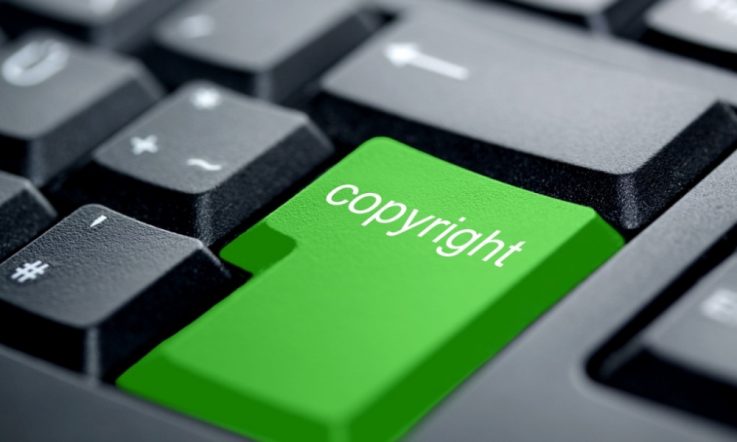Teachers in all settings and subject areas make daily decisions about the resources they use with students to develop learning activities. Their decision-making about resource selection is made more complex when resources have the potential to raise controversial issues or cause offence to others within school communities.
Dr Rebecca Cairns is a Lecturer in the School of Education at Deakin University, and she is also a co-convener of the Transforming Curriculum, Assessment and Pedagogy Research Group in the Faculty of Arts & Education.
Her new research paper, Anticipating Controversy: What’s the Problem Represented to Be in Australian Policies for the Selection of Learning Resources? published in the Australian Journal of Education applies Carol Bacchi’s What’s the problem represented to be? (WPR) approach to 5 Australian policy texts that deal with resource selection and controversial issues in schools. Cairns says she was seeking to map out the national policy context and examine the similarities and differences between them.
‘Some of the questions that I was interested in asking were: how do these policies about resource selection and controversial issues in schools, how do they understand or articulate the problem? And then how do these policies construct certain kinds of problems and solutions?’ she tells Teacher.
‘…And lastly, how might these policies be shaped or relate to those existing discourses such as trigger warnings, controversial issues, outrage culture, inclusive education and the kind of discourses we see in media commentary.’
Teachers critically reflecting on resource selection
In the paper, Cairns writes: ‘Teachers across all settings and subject areas make daily decisions about the nature and potential impact of the resources they use to develop teaching and learning activities.
‘Far from being a mundane element of their practice, resource selection and evaluation occurs in dynamic socio-cultural contexts where curricular considerations intertwine with important considerations relating to social cohesion, religious freedoms, representation and inclusion.
‘In response to diversifying school communities – where polarised or competing worldviews and beliefs are commonplace – teachers are required to critically reflect on resource selection and anticipate materials and topics that may potentially be considered controversial or cause offence.’
Cairns says that when she first started teaching in the year 2000, all of the resources and materials she used came from bookshelves or giant filing cabinets.
‘The days when most teaching resources and texts were kept in filing-cabinets and on bookshelves are long gone … I think digitisation has really changed this space, there's so many resources out there,’ she says.
‘Teachers are also quite time poor, so might not have time to evaluate the resources that they’re using, and then they've got a very diverse student cohort, so there's greater cultural diversity and, as well as that, there’s greater social and political polarisation. All those things are feeding into it being an even more dynamic process than it’s ever been and possibly a trickier space for teachers to navigate.’
On the topic of trigger warnings, Cairns says, on the one hand, there are people calling for greater sensitivity around the content of educational resources and materials, while on the other, there are conservatives describing this as ‘outrage culture’ and ‘wokeness’ – and that gives the impression that teachers are fearful of getting cancelled for saying the wrong thing.
‘I think it is important to look at because if we take a context like the United States, we can see how their political interference has really significantly shaped what teachers can and can't teach, particularly around race-related issues,’ she adds.
The WPR approach
To do this study, Cairns considered the policy responses of Australian education departments and examined resource selection through the lens of the WPR approach.
The following policies were collected and analysed:
- New South Wales (NSW): Controversial Issues in Schools: Direction for the management of controversial issues in schools (New South Wales Department of Education, 2017)
- Northern Territory (NT): Suitable text and media resources in schools –guidelines (Northern Territory Department of Education, 2022);
- South Australia (SA): Selecting and using resources for educational purposes guideline (South Australia Department of Education, 2020);
- Victoria (VIC): Teaching and Learning Resources – Selecting Appropriate Materials (Victorian Department of Education and Training, 2020);
- Western Australia (WA): Use of Texts in Educational Settings (Western Australia Department of Education, 2018).
‘The WPR framework is framed by 7 questions and so it gives a bit of structure to doing this analysis, because often policy analysis doesn't have much structure. It's often about discourse analysis and stuff like that, so it makes doing creative critical policy analysis quite accessible and it encourages researchers to analyse and scrutinise policy,’ Cairns explains.
‘When we start to ask those questions, we start to get a sense of the way policy might be seeking to govern how schools operate or govern students and teachers, and then that prompts us to ask some questions like, OK, if this is the so-called “problem” and the so-called “solution”, what might be left unproblematic? How could we understand this problem a little bit differently?’
Pre-empting controversy
Cairns says one of the main findings to come from doing the comparisons between Australian policies was that there are significant commonalities across the states and territories, but also different ways of understanding and conceptualising resource selection.
‘For example, Victoria's had a very cautious tone, and it really has these underlying expectations that teachers could pre-empt controversy. And NSW is similar, but they are a little bit different in that their policy envisaged controversial issues coming from outside of schools and that the school would protect the students from them, which is interesting because students have controversial views themselves,’ Cairns shares.
Cairns says that, overall, there was an overarching message that while controversial materials are an important part of education, there’s always potential that they may distress students or other community members. ‘And so that raises the question, is this possibly going make teachers fearful or risk averse? Most of the policies tend to position teachers as managers and gatekeepers who can protect students … and that raises the question, do they have the capacity to make those judgments?’
While this research looked at the policy documents themselves, Cairns says the next step is to talk to teachers and students about how they enact these policies in the classroom. ‘I guess it comes back to that question about teachers’ professional judgment, and only a couple of the policies talked about that – that teachers can and should trust their professional judgment.
‘I think we should be able to trust their professional judgment to create those spaces that safely allow the exploration of diverse views and different materials and different perspectives and controversial issues in respectful ways, and in ways that enrich and support learning.’
To read more about the study and its findings, you can access the full article published in the Australian Journal of Education, which is freely available.
References
Cairns, R. (2023). Anticipating Controversy: What’s the Problem Represented to Be in Australian Policies for the Selection of Learning Resources? Australian Journal of Education, 67(2), 196–208. https://doi.org/10.1177/00049441231182452
New South Wales Department of Education. (2017). Controversial issues in schools: Direction for the management of controversial issues in schools. https://education.nsw.gov.au/policy-library/policies/pd-2002-0045
Northern Territory Department of Education. (2022). Suitable text and media resources in schools: Decision-making guide. https://education.nt.gov.au/__data/assets/pdf_file/0006/470679/suitable-text-and-media-resources-in-schools-guidelines.pdf
South Australia Department of Education. (2020). Selecting and using resources for educational purposes guideline. https://www.education.sa.gov.au/doc/selecting-and-using-resources-educational-purposes-guideline
Victoria Department of Education and Training. (2020). Teaching and learning resources: Selecting appropriate materials. https://www2.education.vic.gov.au/pal/selecting-suitable-teaching-resources/policy
Western Australia Department of Education. (2018). Use of texts in educational settings. https://www.education.wa.edu.au/web/policies/-/use-of-texts-in-educational-settings
As a teacher, think about the way you select resources to use in your classroom. What tools do you use to anticipate controversy? Do you use trigger warnings on any sensitive material you present to students?
What strategies do you employ to explore controversial issues in the classroom? How do you ensure you’re presenting an accurate and balanced view of the issue? Do you use a particular policy to guide you through this process?



